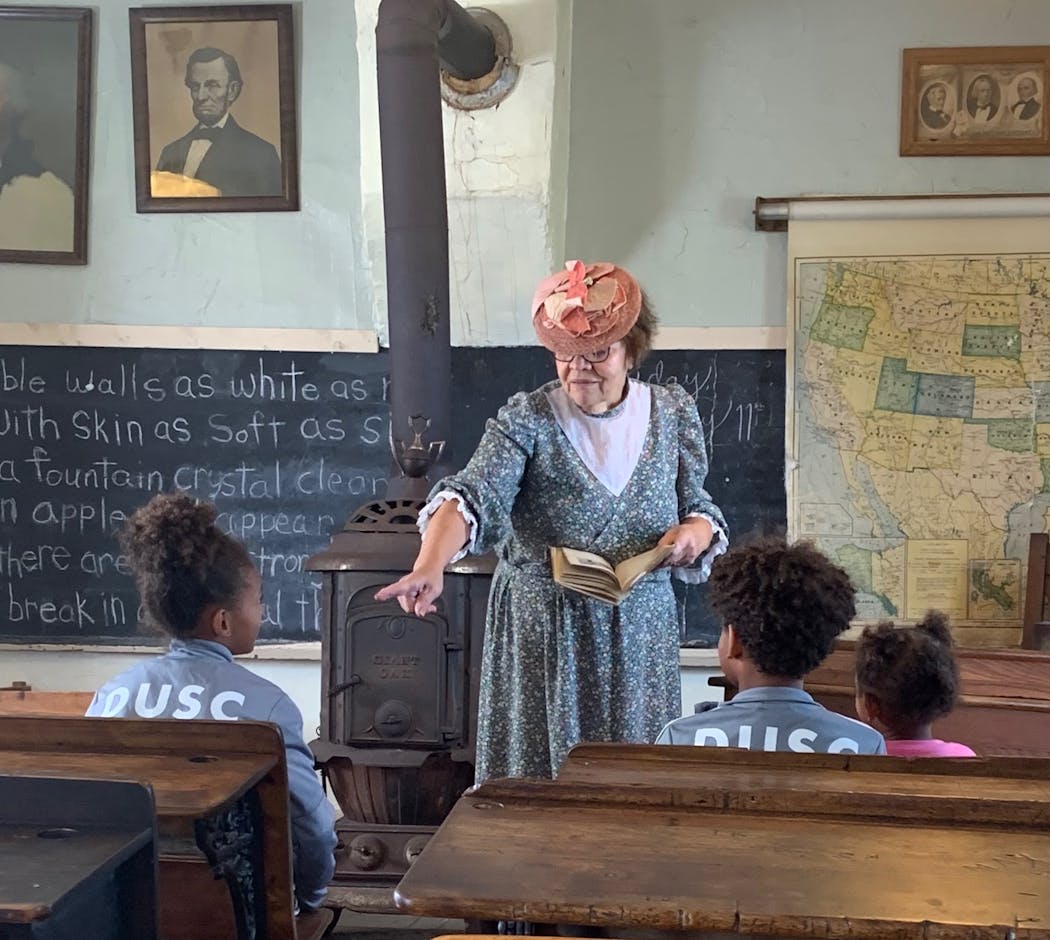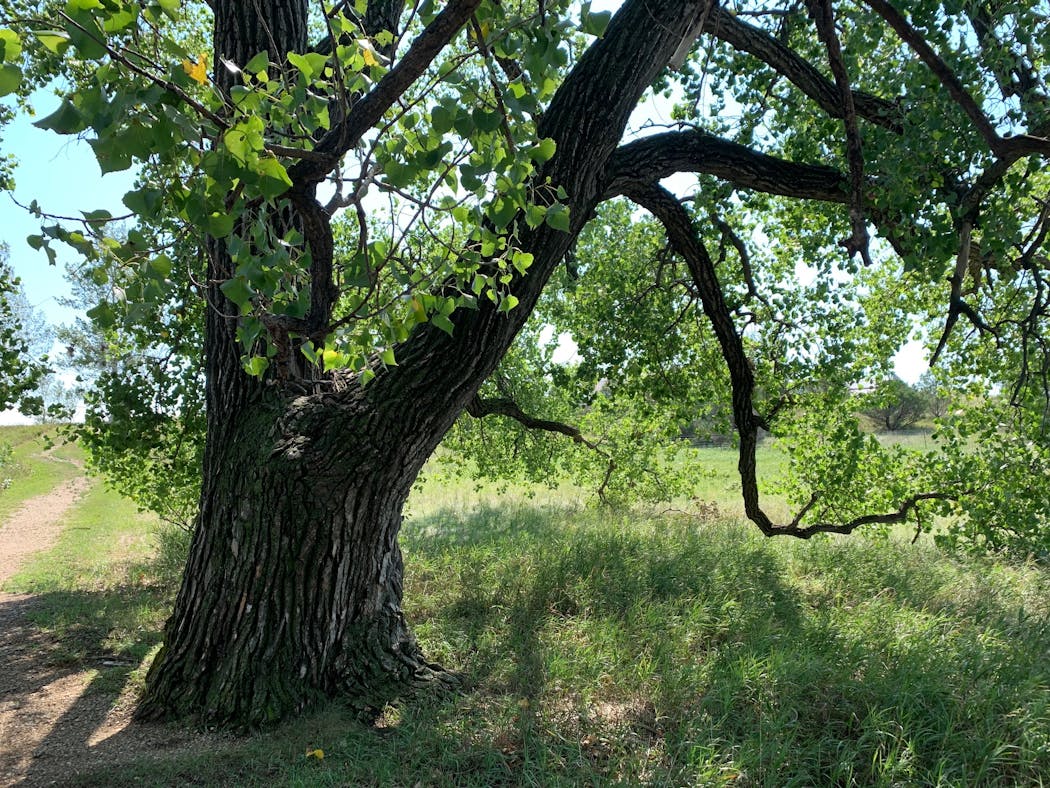It was a dark and stormy night. Make that very dark and very stormy. Bursts of lightning exploded in the sky. Thunder shook the very ground where our covered wagon stood.
Yes, a covered wagon.
Well, the weather was not what I expected when I signed up online for sleeping quarters at the Ingalls Homestead in De Smet, S.D. Nor when I stopped by its visitors center, a few minutes before the doors would be locked for the night.
"Looks like a storm is coming," said the clerk as she handed over the key to the wagon. "There are bathrooms in the storm shelter and here at the center."
And then she was gone, having dispensed the necessary information. The five of us — three granddaughters, ages 3, 7 and 10, my daughter and I — were alone on 150-plus acres of farmland, not far from the shores of Silver Lake, made famous by the children's books of Laura Ingalls Wilder. Little did we know what awaited during our night on the prairie.
After settling in at the covered wagon — sleeping bags stretched out on the lofted back and along two wooden benches on the sides — we headed across the field to the homestead buildings far in the distance, with us looking much like a scene from the TV version of "Little House on the Prairie," the young'uns running through the grass, Ma and Grandma trailing behind. To our delight, we discovered we were not alone, as chickens, kittens and a young calf squawked, meowed and mooed in the outbuildings, cause for excitement for these New York City kids who had never been to a farm.
As the sun set, we headed back to the wagon, given we would have no light but that from a cellphone once darkness fell.
Shortly after midnight, the light show outside, illuminated through the wagon cover, woke me. In the distance, I could hear sporadic rumbles.
I checked my phone for any weather updates. None.
More lightning. More thunder. My daughter awoke.
"It will blow over," I told her, before pulling my phone from the electrical plug (a nod to the 21st century).
Did South Dakota have tornadoes? I checked Google. There were 23 in 2020. They tend to occur in the eastern part of the state. Oh. De Smet is 60 miles from Minnesota's western border.
Another crack of thunder, and the whole crew sat up and peeked out the window. Then the rain fell, in buckets. We no longer could see the security light on the building in the distance.
For two hours, the rain pelted us, wind battering the wagon and lightning brightening the sky as though it were daylight.
"We'll be fine," I said in my most calm, former-camp-counselor voice, while silently contemplating the possibility that we would be hit by lightning, as we were one of the taller points on a slight ridge among flat fields that went for miles.
With a jolt, I realized those underground bathrooms weren't just for convenience. Should we make a dash for it? Given the downpour and the chance we would be drenched for hours — hypothermia crossed my mind — it seemed safer to wait it out in the wagon, hoping it was securely anchored to the ground, as I did not want to end up in Kansas.
We whispered and watched the play of light, which gradually dimmed before the kids dozed off, the rumble of thunder rolling off elsewhere.
Next morning, the sun shone bright and cheery. "That was the best night ever," the kids said with wide grins.
"We paid extra for the storm," I told my daughter with a laugh.
Living history
All summer last year, the grandkids and I read the Wilder books aloud, in preparation for this road trip in late August, timed to avoid crowds. Laura and her sisters had become part of our family.
Charles Ingalls, known as Pa in the books, had filed his property claim for a fee of $13.86 in 1880 under the Homestead Act, initially building half of the 14-by-20-foot structure for the family, finishing the second half the next year, and later expanding it. In return, he agreed to live on the homestead and farm a minimum of 10 acres for at least five years, which he did with corn, oats and wheat. (Find the details regarding his claim in the National Archives at archives.gov/research/land/ingalls).
The Ingalls spent two winters in the nearby town of De Smet, which are the basis of Wilder's "The Long Winter." By 1887, the Ingalls family had moved to town year-round, and Laura had married Almanzo Wilder and moved away. In 1892, Charles sold the property. Laura's books would not be published for four decades, starting with "Little House in the Big Woods" in 1932.
The property, now a living history farm, is run by a family that plants the same three crops yearly, in a nod to the past. The buildings are either replicas that Laura would have recognized (such as the homestead itself, built from the dimensions that Charles Ingalls filed with the government) or structures from elsewhere that have been moved to the property.
But the grandkids didn't want to talk history, not when there were dish towels to scrub on the washboard at the Ingalls home.
Not when there were horses to drive, as they held the reins of a team that pulled a wagon to the one-room schoolhouse a half-mile down the road. Not when there were lessons to recite as a retired third-grade schoolteacher drilled the girls on poems, stories and questions about Laura (they aced the answers, of course).
On one blackboard, Laura's words offered the gentle perspective of her books: "It is still best to be honest and truthful and to make the most of what you have."
The girls tugged the school bell with gusto at the close of the session. They attempted to rope the fake calf near the windmill. They zig-zagged merrily across the barnyard, chasing kittens among the hay bales, wildflowers and farm structures.
I followed with a camera in hand and Laura's stories in mind, lingering at the five cottonwood trees at the northwest corner of the property, all that remained from those that Pa had planted around their homestead 140 years earlier.
"Little trees!" Laura shouted. "They're cottonwoods," Pa said. "They all grew from seeds of the Lone Tree that we saw across the prairie when we were coming out from Brookings." (From "By the Shores of Silver Lake.")
As for that storm, we weren't in danger after all, operations manager Ann Lesch assured me later, noting that De Smet has sirens for dangerous weather. If there were warnings specifically for the area, we would have been notified.
"We have some intense storms here," she said. "It's part of being on the prairie."
Laura couldn't have said it better.
Lee Svitak Dean is a former editor at the Star Tribune. Reach her at lee@leedeanbooks.com.
Ingalls Homestead
Where: 20812 Homestead Road, De Smet, S.D., 1-800-776-3594 or ingallshomestead.com, 250 miles west of Minneapolis.
Admission: $15.90-$20 ages 5 & older.
Lodging: Includes a bunkhouse ($80/night), four covered wagons ($60-$70), space for four RVs ($40) and some tent camping ($10); 1-800-776-3594 or ingallshomestead.com.
Laura Ingalls Wilder Pageant: Held July 8-10, 15-17, 22-24 in De Smet; desmetpageant.org.
Laura Ingalls Wilder Historic Homes and Discovery Center: discoverlaura.org.
See also: Marker for the homestead of Almanzo Wilder, Laura's husband; the cemetery where Pa, Ma, Mary, Carrie and Grace Ingalls are buried.
More Laura sites in the Midwest: Walnut Grove, Minn.; Spring Valley, Minn.; Pepin, Wis.; Burr Oak, Iowa; Independence, Kansas; Mansfield, Mo.

The 5 best things our food writers ate this week

A Minnesota field guide to snow shovels: Which one's best?

Summer Camp Guide: Find your best ones here

Lowertown St. Paul losing another restaurant as Dark Horse announces closing




